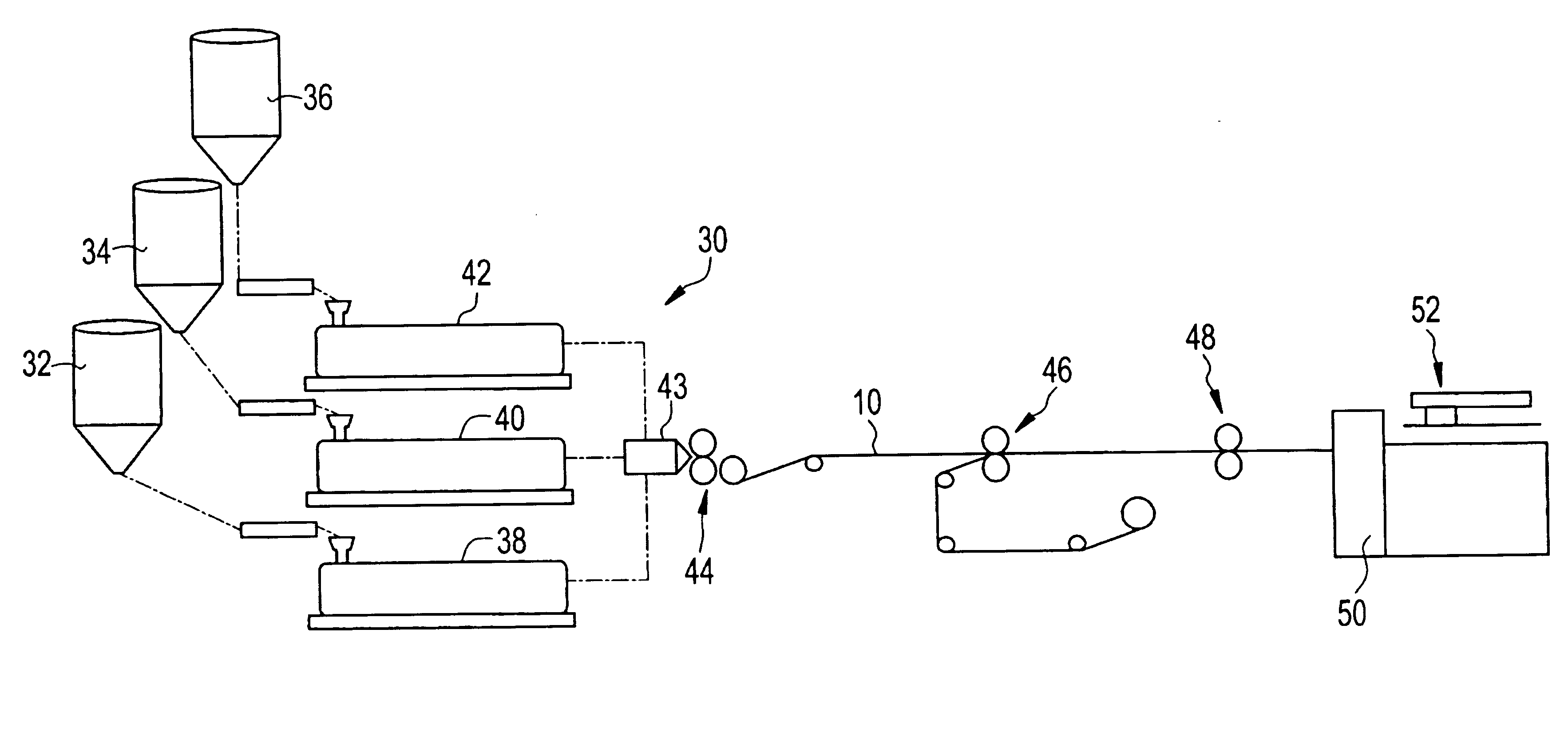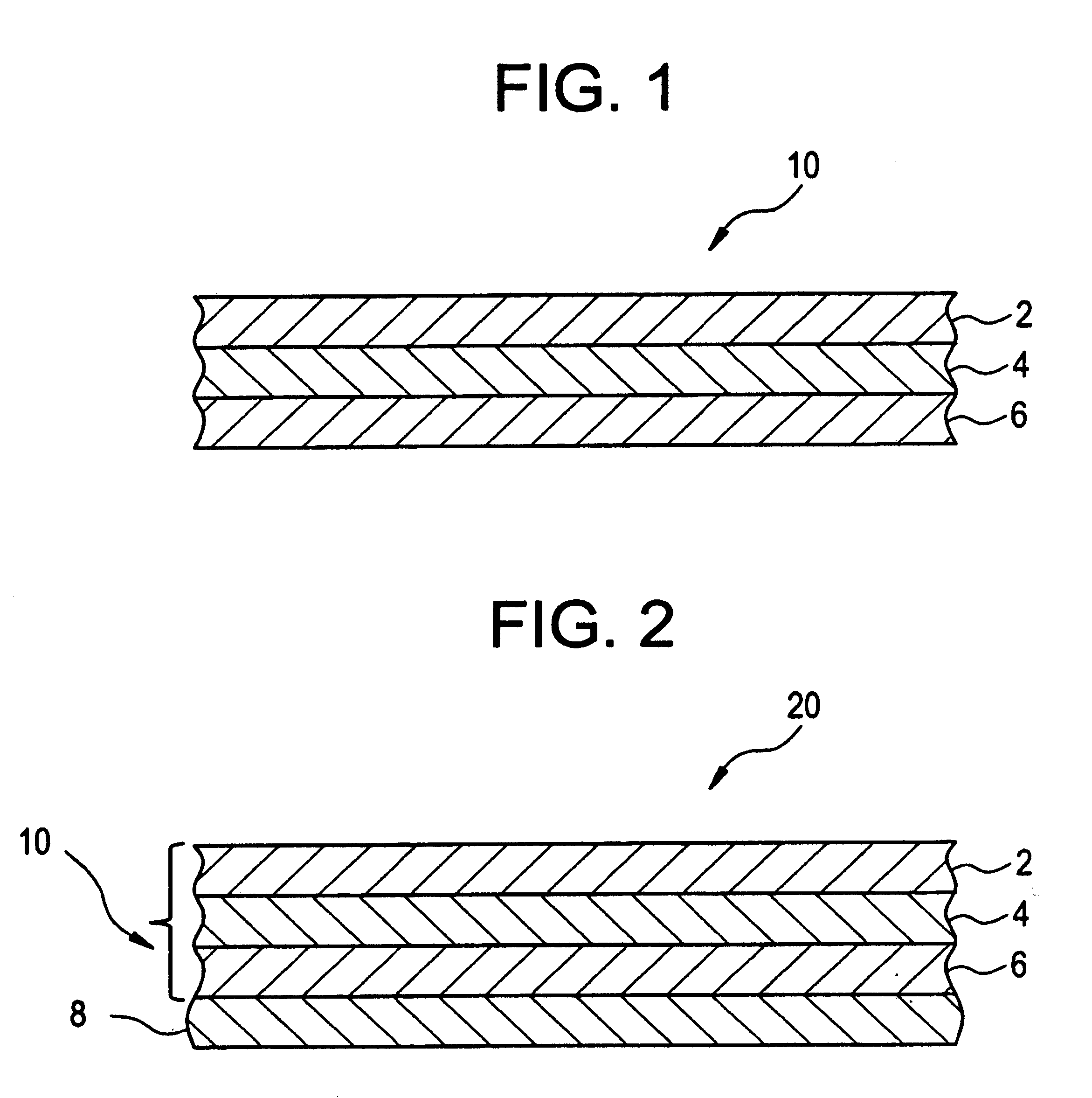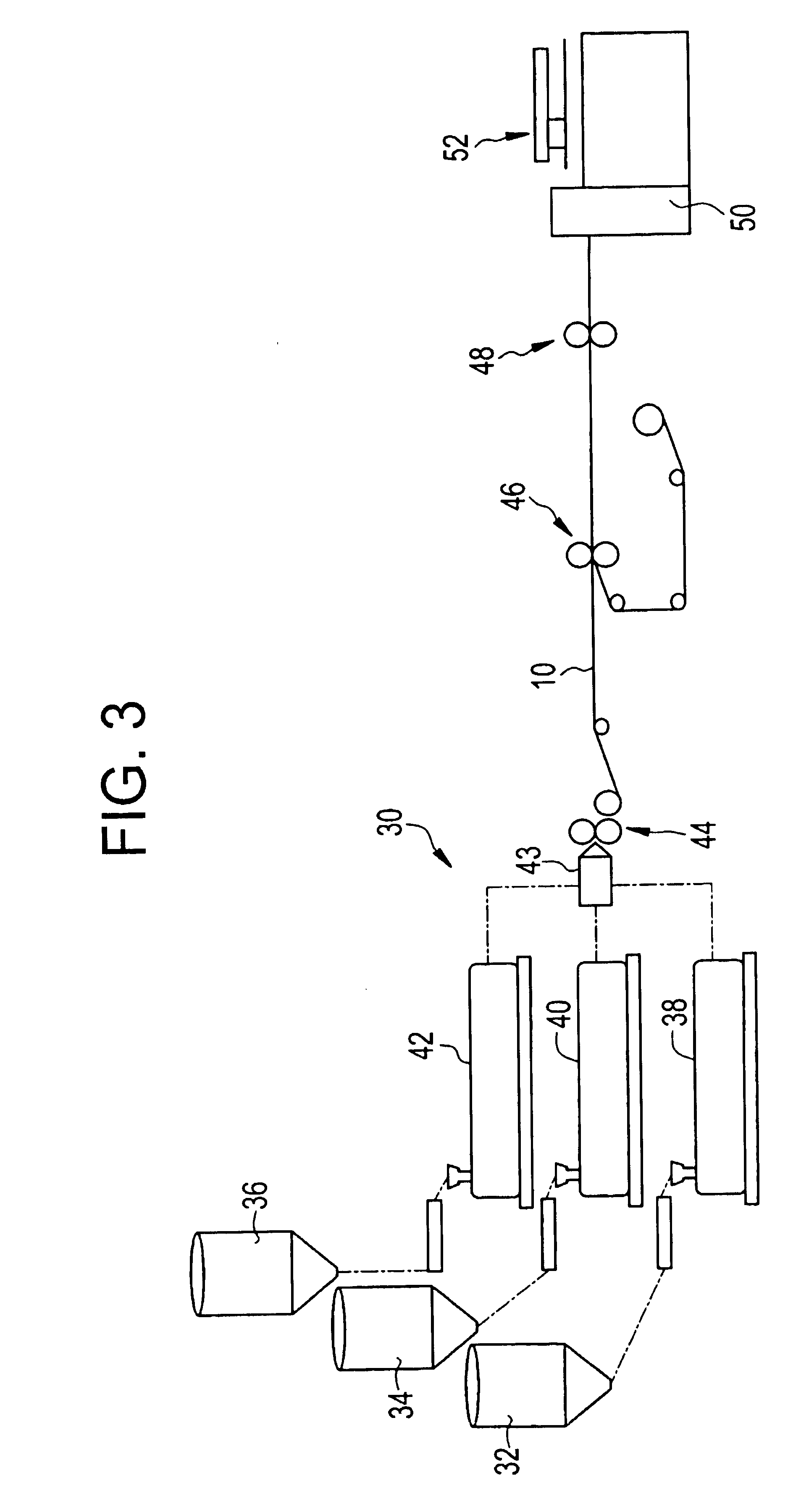Method for manufacturing formable thermoplastic laminates
a thermoplastic laminate and multi-layer technology, applied in the manufacture of synthetic resin layered products, butter, textiles and papermaking, etc., can solve the problems of glass fiber exposed imperfections on the surface of the surface of the surface of the surface of the surface of the surface of the surface of the surface of the surface of the surface of the surface of the surface of the surface of the surface of the surface of the surface of the surface of the surface of the surface of the surface of the surface, and the cost and time-consuming steps
- Summary
- Abstract
- Description
- Claims
- Application Information
AI Technical Summary
Benefits of technology
Problems solved by technology
Method used
Image
Examples
example 1
[0116] A series of three-layer laminates was prepared on a production line. The laminates had a common laminate composition but were made subject to varying process conditions. Each laminate comprised a first surface layer comprising an isoterephthalic resorcinol / bisphenol A copolymer, a middle layer comprising polycarbonate and a second surface layer comprising a blend of GELOY™ polycarbonate, acrylonitrile-styrene-acrylate graft copolymer (ASA) and styrene-acrylonitrile copolymer (SAN). The laminate was extruded at temperatures between 260° C. and 277° C. (500° F. and 530° F.) to a film thickness of about 12.7 mm (about 0.5 inch). The first surface material was on the bottom of the laminate, in contact with the second calender roll; the second surface material was in contact with the first calender roll.
[0117] The nip load in the first nip of the roll stack, the calender roll temperatures, the line height, the die height and the die position relative to the nip were varied for pu...
example 2
[0122] In another set of experiments similar to those in Example 1, the nip load in each case did not exceed about 400 N / cm (about 2×6000 lbf / 52 inches), the temperature of roll 1 was about 55° C. to about 80° C. (about 135° F. to about 175° F.), roll 2 and roll 3 was about 90° C. to about 118° C. (about 200° F. to about 245° F.), and the line height and line out position were the same as in the experiments of Example 1. None of the samples in this set of experiments produced a laminate with acceptable surface quality.
[0123] The method described herein can be used to produce a laminate having a first surface layer that may provide a superior quality surface, i.e., one having fewer or, more specifically, no brushlines, die lines or any other lines, and fewer or, more specifically, no point defects such as pinholes, voids, gels, black specs, etc., before and after thermoforming the laminate onto a substrate than was attained with laminates made according to the prior art. In one embo...
PUM
| Property | Measurement | Unit |
|---|---|---|
| Temperature | aaaaa | aaaaa |
| Temperature | aaaaa | aaaaa |
| Temperature | aaaaa | aaaaa |
Abstract
Description
Claims
Application Information
 Login to View More
Login to View More - R&D
- Intellectual Property
- Life Sciences
- Materials
- Tech Scout
- Unparalleled Data Quality
- Higher Quality Content
- 60% Fewer Hallucinations
Browse by: Latest US Patents, China's latest patents, Technical Efficacy Thesaurus, Application Domain, Technology Topic, Popular Technical Reports.
© 2025 PatSnap. All rights reserved.Legal|Privacy policy|Modern Slavery Act Transparency Statement|Sitemap|About US| Contact US: help@patsnap.com



